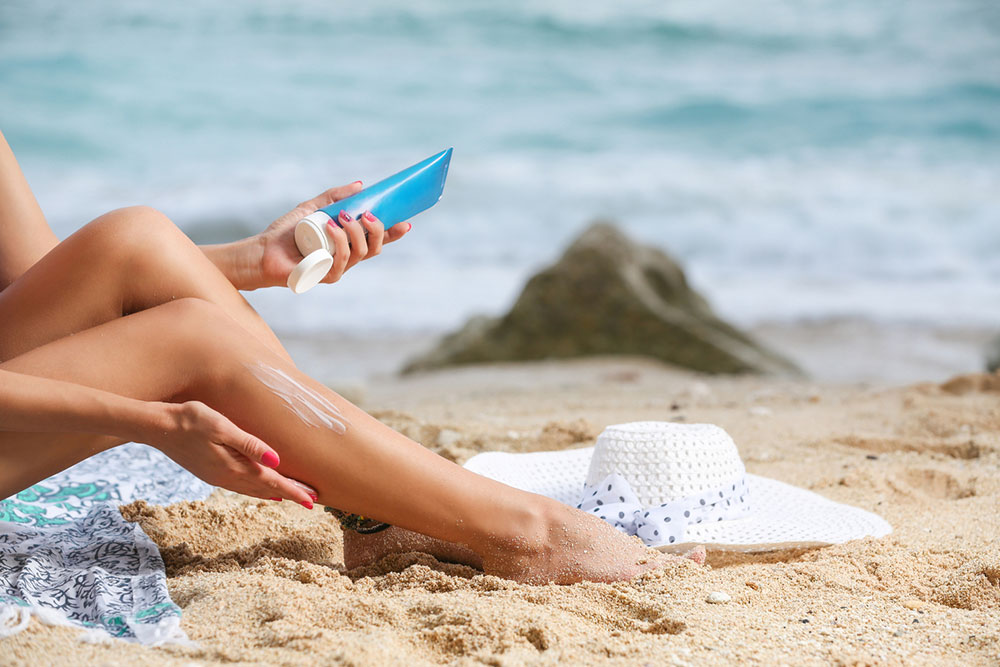8 sunscreen mistakes that could harm the skin

Applying sunscreen is one of the most essential aspects of every skincare routine. It is necessary to get a broad-spectrum sunscreen with potent UVA and UVB-blocking agents, as these help prevent sunburns and minimize the formation of wrinkles, sunspots, and other signs of aging. Furthermore, applying sunscreen is an effective measure to lower the risk of skin cancer. However, certain sunscreen mistakes could harm the skin. Keep reading to learn more about such common mistakes.
Not applying enough amounts of sunscreen
This is a common mistake many people make while applying sunscreen. When it comes to the face, two fingers’ worth of sunscreen is enough. Also, when applying sunscreen to the body, it is advised to use at least an ounce. Moreover, use lotions instead of aerosol sprays. The sprays are not effective in coating the skin uniformly and may pose the risk of inhalation.
Not reapplying sunscreen every two hours
It’s a misconception that only one coat of sunscreen is enough to last through a day. All sunscreens start to lose their protective effect over time. Moreover, a higher SPF doesn’t mean the effectiveness will last longer. Irrespective of the SPF rating of the product, it is important to reapply the sunscreen at least every two hours. It is essential, mainly when one is spending time outdoors. In addition, it is crucial to reapply sunscreen after activities like swimming or sweating. It will prevent any harm to the skin.
Applying sunscreen only when outdoors
For many individuals, it is a common habit to put on sunscreen only after stepping out. However, all sunscreens take some time to work effectively. It usually takes about 15 to 30 minutes for the full effect of protection to start. So, instead of applying the product outdoors, it is recommended to apply it indoors before heading out. It will help minimize the risk of sun damage on the skin.
Applying a product that is a combination of sunscreen and bug-repellent
Several products combine that affect the sunscreen and bug repellent. These products usually have a high amount of active ingredients that are required to keep off bugs and insects. But when one reapplies these products every two hours, the active ingredients accumulate on the skin. It can lead to skin damage. Also, if the product is not reapplied every two hours, the effect of sunscreen will wear off, leaving the skin prone to harmful UVA and UVB rays.
Not wearing sunscreen all the time
One is exposed to UV radiation from the sun throughout the day. Even on overcast days, about 80% of the sun’s UV rays can pass through the clouds. In addition, these rays can reflect off ice and snow during the colder winter months. Moreover, the UV rays can penetrate through glass panes of cars, buses, or even windows at work or home. So, the skin is always at risk of UV damage, no matter the season or whether one is outdoors or indoors. Therefore, one must never skip applying sunscreen.
Using an old or expired sunscreen
Most sunscreens have a stable and effective formulation for at least three years. As the product ages, the formulation may separate, or clumps may form. When this happens, the sunscreen won’t be applied uniformly all over the skin. It will result in less effective protection. So, using an expired or old product can do more harm than good to the skin. Therefore, always check the expiration date and texture of the product before using it.
Not paying attention to the ingredient label
Not all ingredients used in every sunscreen are good for health. Some of the components could harm the skin. So, one must always check the ingredient lists before purchasing or using sunscreen.
Depending only on sunscreens
It’s a mistake to rely on sunscreen only for complete sun protection. To ensure there is minimal damage from the sun, one should also wear protective clothing and accessories. These include wearing baseball caps or hats to protect the head, hair, neck, ears, and face from direct sunlight. In addition, one should wear sunglasses to protect the eyes from the sun’s glare and UV rays. Wearing light-weight long-sleeve shirts and pants is also advised when staying out in the sun for a long time.



